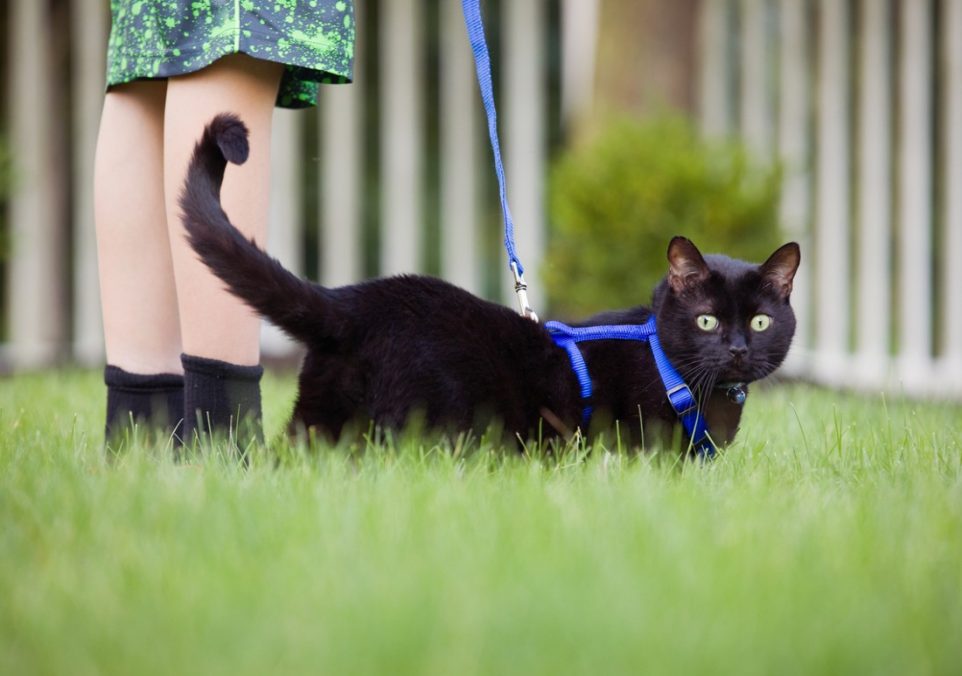How to Leash Train a Cat: A Beginner’s Guide

Leash training is not just for dogs! Many cat owners have discovered the benefits of teaching their feline companions to walk on a leash. Not only does leash training provide an opportunity for exercise and outdoor exploration, but it can also strengthen the bond between you and your cat.
If you’re interested in leash training your cat but aren’t sure where to start, this beginner’s guide is here to help. In this blog post, we will walk you through the steps and provide essential tips to successfully leash train your cat and make outdoor adventures a safe and enjoyable experience for both of you.
Introduce the Harness and Leash
Like getting your cat used to a cat collar, start by slowly introducing your cat to a comfortable, well-fitting harness and leash. Allow them to sniff and explore the harness and leash before gently putting it on. Gradually increase the time your cat spends wearing the harness, even just around the house, ensuring they associate it with positive experiences.
Familiarize Your Cat With Their Harness Indoors
Allow your cat to wear the harness indoors initially, giving them time to adjust and move around freely. This step helps them become comfortable with the feeling of wearing a harness before venturing outside.
Attach the Leash
Once your cat is comfortable wearing the harness, attach a lightweight leash to it and let your cat explore indoors. Supervise your cat closely during this stage, ensuring they don’t get tangled or show signs of distress.
Encourage Positive Associations
Reward your cat with treats, praise, and affection during and after each step of the leash training process. This positive reinforcement helps create a positive association with the harness and leash, making your cat more receptive to the training.
Practice in a Controlled Environment
For the initial outdoor training sessions, move to a controlled and quiet outdoor area, such as a fenced yard or patio. Allow your cat to explore at their own pace while keeping a gentle hold on the leash. Avoid pulling or forcing your cat to walk, which may create anxiety or resistance.
Gradually Expose Your Cat to New Environments
Gradually expose your cat to new environments, such as parks or quiet streets, as they become more comfortable with leash walking. Always prioritize your cat’s safety and well-being by avoiding crowded or noisy areas, and never leave your cat unattended while outdoors.
Follow Your Cat’s Lead
Let your cat set the pace during leash walks. Some cats may prefer short, leisurely walks, while others may enjoy longer outings. Pay attention to their body language and provide breaks or return home if signs of stress or fatigue are observed.
Be Patient and Consistent
Leash training takes time and patience. Each cat is unique and will progress at their own pace, so it’s important to note that not all cats will take to leash training immediately or even at all. Some cats may feel uncomfortable or stressed by the concept of being restrained. It’s crucial to respect your cat’s individual personality and preferences.
If your cat shows signs of extreme anxiety or resistance during the training process, it may be best to consider alternative ways to provide mental and physical stimulation, such as interactive toys or enclosed outdoor spaces. Always prioritize your cat’s well-being and adapt the training approach to suit their comfort level. Remember, every cat is unique, and the goal is to enhance their quality of life while fostering a strong bond with you.
Conclusion
Leash training can be a rewarding experience for both you and your cat. By following this beginner’s guide and implementing positive reinforcement techniques, you can successfully teach your cat to walk on a leash. Remember to prioritize your cat’s comfort and safety, and be patient throughout the training process. Leash training opens up a world of possibilities for your cat to safely experience the great outdoors while strengthening the bond between you. So, grab a harness, attach a leash, and embark on this exciting adventure with your feline companion.
Your Pet’s Best Interest, Always
At Pet Institute, we take pet care seriously. We're dedicated to transparency, impartiality, and the well-being of your pets in every article, review, and recommendation we provide. Our unwavering commitment to these principles ensures that you, our valued reader, always receive reliable and unbiased information. Let us be your trusted guide in the world of pet care and companionship.